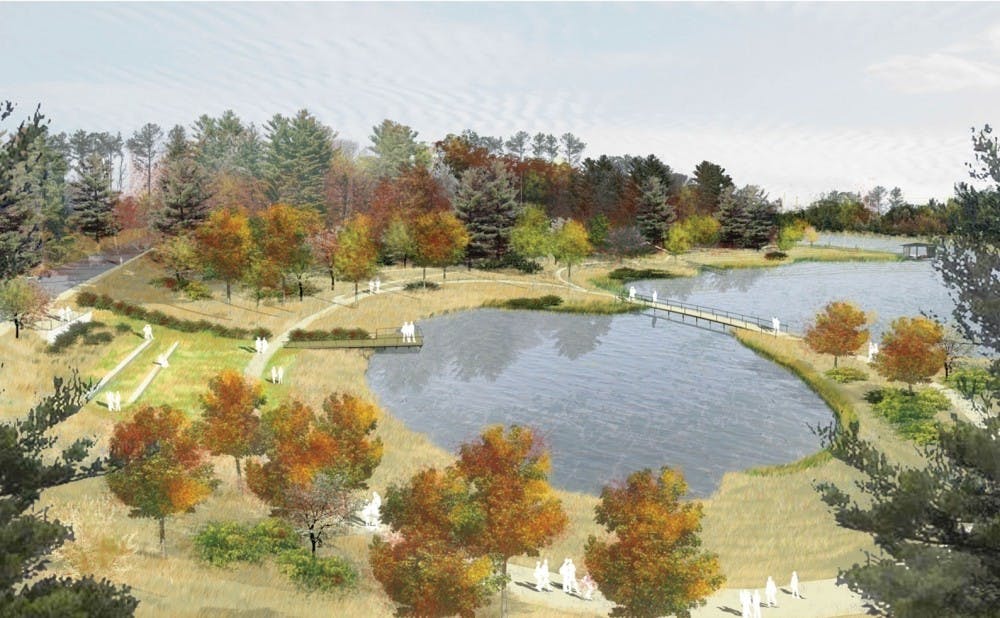A new reclamation pond near Erwin Road is expected to lower Duke’s environmental footprint once it is completed next summer.
The pond will not only provide a preliminary filtration for the school’s storm runoff, but also a standby reservoir for dangerous drought situations. Resources from the pond will also be available for use in the water chilling plant, which could help provide East Campus with more air conditioning.
“It’s going to provide water for the campus used for the air conditioning, but also it will improve water quality going into the Jordan River reservoir,” said Curt Richardson, director of the Duke Wetland Center and professor of resource ecology of the Nicholas School of the Environment. “And it will also provide some educational and scientific possibilities with the effects of creating water-holding areas.”
The pond will save 100 million gallons of potable water a year, said Sarah Burdick, director of administration and special projects for Facilities Management. It will also benefit storm water that leaves campus.
“Currently the stream that runs through the area is a major storm water outflow for campus and there is no treatment to the water before it leaves campus,” Burdick wrote in an email Nov. 26. “The pond will allow for a natural cleaning of this storm water.”
Facilities Management has planned for the reclamation pond for five years, during which they have acquired 15 different permits from agencies such as the U.S. Army Corps of Engineers, the State of North Carolina and the City of Durham.
“In 2007 Durham experienced a severe drought—it got so bad that Durham had less than 60 days of water available,” Burdick said. “So the planning process began in 2008 as a response to that drought.”
Facilities Management worked with the Nicholas School and the biology department to ensure that the landscape will adapt with the different climates throughout the year.
“I think the biggest challenge will be to maintain the wetland water communities because the water table in that pond will go up and down several feet as they draw water out, especially in the summer time,” Richardson said. “It’s hard to determine exactly how well the plants will survive.”
The reclamation pond will also have other recreational and educational benefits, such as taking environmental science and biology classes to the pond to learn about the unique ecology of wetlands.
“It will be a recreation amenity for everyone on campus,” Burdick said. “It includes a boardwalk, amphitheater and walking trails.”
The pond will also help provide the infrastructure to give East Campus air conditioning, since Duke uses a chilled water system for cooling.
“The chilled water leaves the plant, and goes to each building on campus and into the air handling equipment and cools the buildings. The water returns to the plant for reuse,” Burdick said. “The water from the pond will not be the water that is sent to the buildings to cool the air but will be used during the process at the plant to make that chilled water. The pond water is used in the process, not the product of chilled water.”
Get The Chronicle straight to your inbox
Signup for our weekly newsletter. Cancel at any time.

